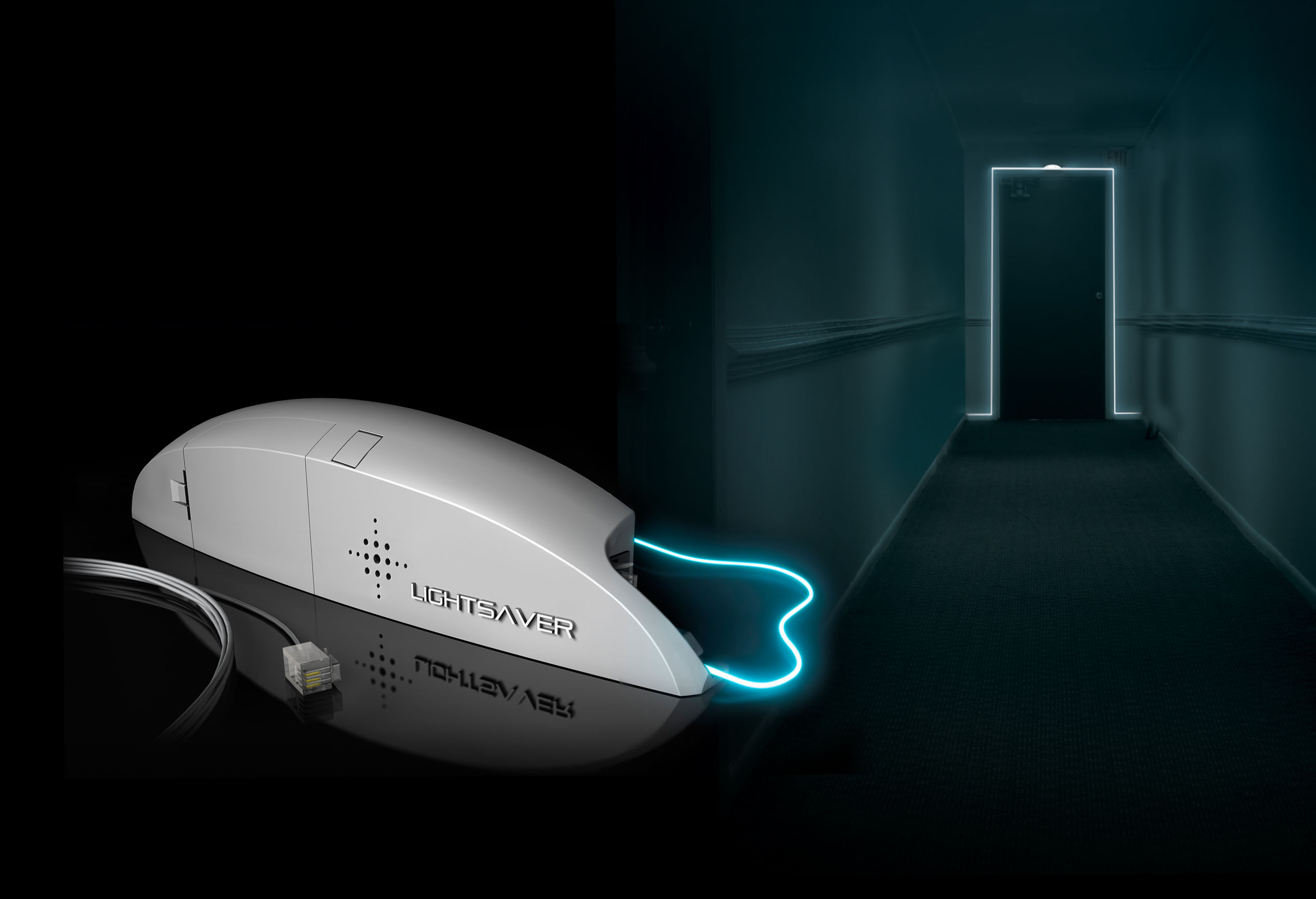Emergency lighting, visual notification & low-level exit demarcation
Introduction The LinearStrobe™ Model L-200Si (12v/24v) – Fire and Life Safety, all in ONE™
For the first time in years, AHJ’s now have a real choice in emergency lighting, visual notification and low-level exit demarcation; the LinearStrobe. So how does a completely new technology enter the fire and life safety industry without having the specifications of the old technology? Federal laws strictly prohibit the creation of barriers to entry to unduly restrict trade within a marketplace.
These laws, including Fire and Life Safety Codes are “required to ‘not’ inhibit the advancement of safety through creating barriers or suppressing advancements that can reduce injury and loss of life.” How can a new innovation’s specifications be required to be the same as an older technologies specification? In other words, how can something new be “required” to be something old? It cannot, legally. Therefore, all codes must be written to allow for new innovations. Take for example, these citations:
- NFPA 72 & NFPA 101- “Nothing in this Code shall prevent the use of systems, methods, devices or appliances of equivalent or superior quality, strength, fire resistance, effectiveness, durability and safety over those prescribed by this code.”
- ICC’s IFC & IBC- “Nothing in this standard is intended to prevent the use of designs, products, or technologies as alternatives to those prescribed by this standard, provided they result in equivalent or greater accessibility and such equivalency is approved by the administrative authority adopting this standard.”
It doesn’t take long as a Code professional to recognize that the codes that we use in jurisdictions everywhere in the U.S. are expressly designed to vest the AHJ with the authority to adopt better ways of meeting the Code as they arise. The LinearStrobe, for a variety of reasons, is just that “better way”.
Equivalency
How are new innovations protected from being prevented to entering the marketplace by competitors who want to maintain the same older technologies because they profit from them? Well, ADA and the U.S. Department of Justice take it pretty seriously; especially for the disabled. But it’s really the AHJ and his public’s trust in him that ushers in new and better ways of advancing safety. It is through the impartial AHJ’s exclusive legal right to make determinations in the field using his expertise under the principles of Equivalent Facilitation or Equivalency that the jurisdiction’s citizens rely on to advance safety. Wise AHJ’s choose advanced technologies to make their jurisdictions safer places and our code platform gives them the tool (the principle of equivalency) to do it.
Under the principle of equivalency, the new innovation being introduced must, first, be determined to “serve the purpose and intent of the code” and, secondly, must have the required documentation to verify that it has been tested to meet (or exceeds) the performance standards and the manufacturer’s specifications. Older technologies’ specifications are completely irrelevant when reviewing a new product or approach designed to serve the Code’s purpose. These new systems, methods, devices, appliances, designs, products, or technologies must be of equivalent or superior quality, strength, fire resistance, effectiveness, durability and safety and/or provide equivalent or greater accessibility over those prescribed by the code used in the jurisdiction in order to be approved by the governing AHJ.
By virtue of being tested and listed to the very highest standards of performance in the industry, UL 1971, the LinearStrobe is already pre-qualified and readied for AHJ approval using equivalency for its use in any application where lower performance standards, such as UL 924 and UL 1994, etc. apply. Test reports, listing confirmations and other supporting studies and data are readily available for free for AHJ’s considering the LinearStrobe for a variety of uses in emergency lighting, visual notification and low-level exit demarcation applications
Purposes
The obvious purpose of the LinearStrobe™ is “to alert people to an emergency condition (like fire) “and” to help them to locate the exits and/or path of egress below stratified smoke layers.” It simultaneously Alerts, Demarks “and” Directs; effectively meeting or exceeding the intended purpose of the Codes that require devices or appliances in the visible notification, exit & egress signage/path marking and emergency lighting classifications. The LinearStrobe clearly serves the intended purposes of the Codes that regulate these 3 primary and very different fire and life safety fronts:
- VISUAL NOTIFICATION: The purpose of visible notification appliances is to flash in a synchronized fashion to “alert” the deaf and hearing impaired to the existence of a fire emergency condition.
- EXIT & EGRESS SIGNAGE/MARKING: The purpose of low-level exits signs is to help people locate the path of egress below the stratified smoke layers.
- EMERGENCY LIGHTING: The purpose of emergency lighting systems is to “minimize danger to life from the effects of fire, including smoke, heat, and toxic gases created during a fire” and “to allow for the prompt escape of occupants from buildings or, where desirable, into safe areas within buildings”.
In all 3 of these very different emergency signaling platforms, the minimum requirements are established. The LinearStrobe™ clearly “Serves the Purpose” intended by the Codes and has the definite capability to take the place of older, and many times less effective technologies, which are traditionally utilized to satisfy these code requirements today.


